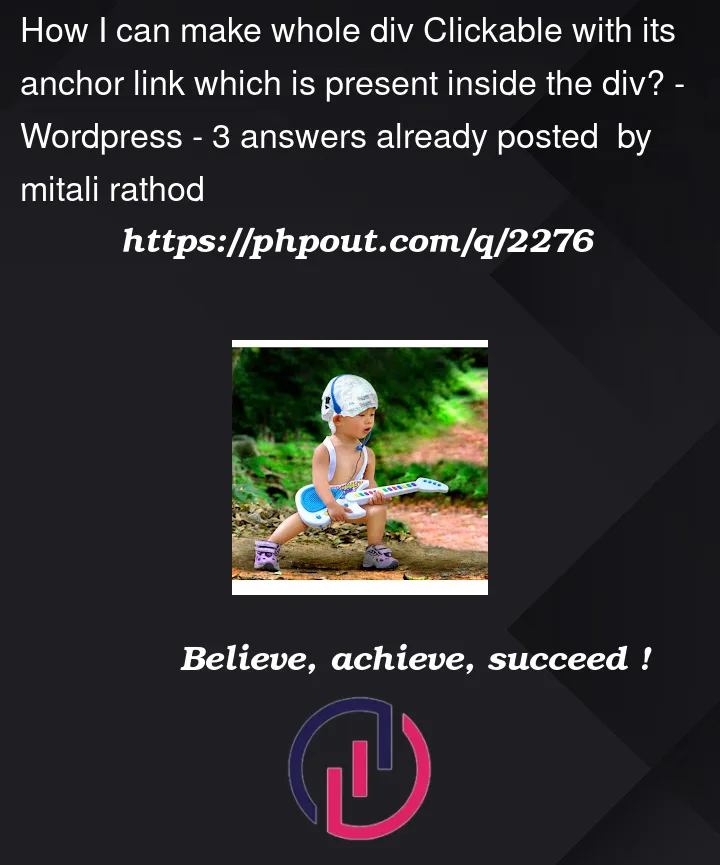I have one box div inside that, user can easily add link for h1 tag i.e for title tag. but I require that it should apply to the whole div. The anchor tag is coming from WordPress editor toolbar, so how can I extract that href and add to whole div. code is using React.
eg :
<div class="box">
<h1>
<a href="https://stackoverflow.com/questions/13396721/if-href-url-change-add-class-to-parent- element">The new face of marketing</a>
</h1>
<p>Marketing</p>
</div>I will need whatever user will add url for title it should apply to whole div and make div clickable with respect to its url.




3
Answers
IT IS NOT Working On this Snippet
You can see here Codepen link Link Open in New Tab Using Jquery
You can find the URL in a tag and set it to a div for clickability using "jQuery."
When you click on ".box," you’ll see the tag "a" inside. and click the link to open it in a new tab.
One approach to this is the following, with explanatory comments in the code:
JS Fiddle demo.
References:
Element.append().Element.classList.Element.closest().Element.matches().Element.querySelector().Node.firstChild.Node.insertBefore().Node.parentNode.NodeList.prototype.forEach().If you’re looking for a jQuery solution as your tag indicates, this is how I would do it.
Explanation
Add a
hreftag to the div you want to be clickable as well as a classclickable-box.Define a jQuery listener to watch for any click event on a div with the class
clickable-boxand redirect the page to the url defined in the div href tag.